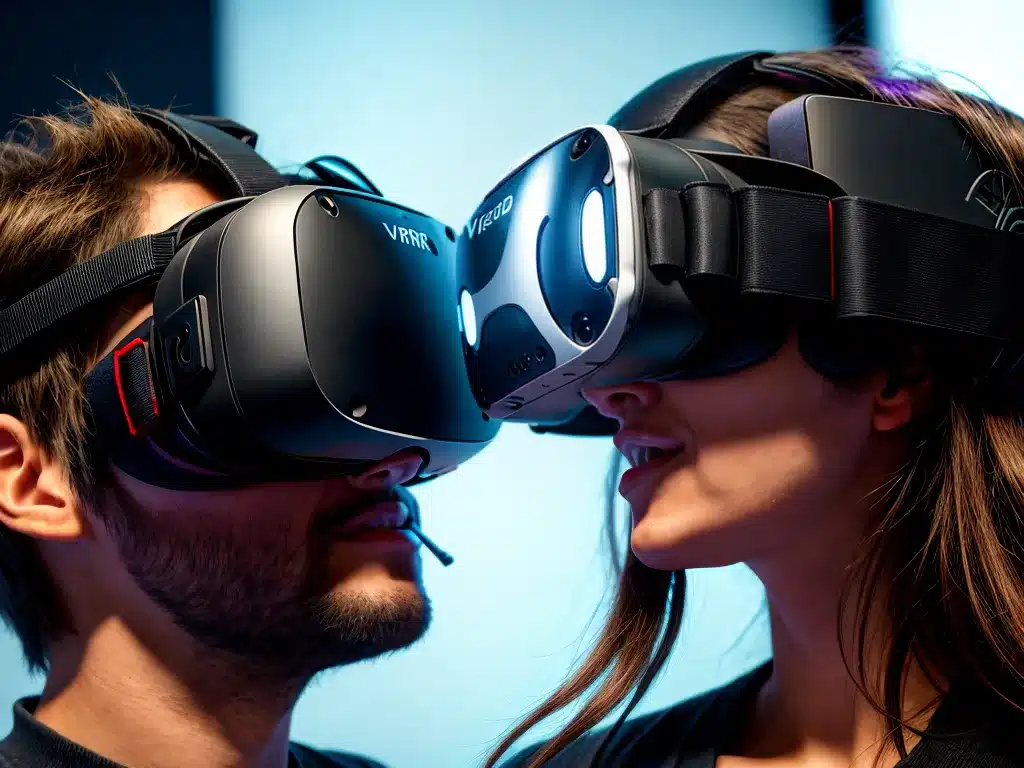
Are VR Headsets Finally Going Mainstream?
Introduction
Virtual reality (VR) has come a long way since the early prototypes of the 1990s. In recent years, major tech companies like Facebook, Sony, HTC, and Oculus have released advanced and accessible consumer VR headsets. As prices drop and content libraries grow, VR seems poised to move beyond its niche audience of gamers and early adopters. In this article, I’ll examine the evidence that suggests VR headsets are approaching mainstream adoption.
Market Growth and Projections
The global VR headset market has seen substantial growth in recent years. According to market research firm IDC, VR headset shipments grew by 92.1% in 2021 compared to 2020, to 11.2 million units. While VR still represents a small portion of the overall tech market, this growth rate suggests rising consumer interest.
IDC expects strong VR headset shipment growth to continue in coming years, projecting a 48.3% compound annual growth rate (CAGR) from 2021 to 2025. By 2025, IDC predicts 50 million VR headset units will ship globally. Other market research firms forecast similarly strong growth:
- Mordor Intelligence: 43.5% CAGR from 2022-2027
- Emergen Research: 31.4% CAGR from 2021-2028
This consistent outlook across research firms points to an industry prepared for mainstream expansion.
Falling Prices
One key driver of expanded VR adoption is falling headset prices. When the Oculus Rift and HTC Vive launched in 2016, both cost $599 – putting VR out of reach for many consumers. The latest headsets retail for much lower prices:
- Oculus Quest 2 – $299
- HTC Vive Flow – $499
- Sony PlayStation VR2 (launching 2023) – rumored around $350
Major headset makers seem focused on bringing costs down. For example, Meta CEO Mark Zuckerberg stated a key goal for the next Oculus Quest is a headset under $300. As prices approach the vicinity of gaming consoles or premium smartphones, VR becomes an easier sell to mainstream consumers.
Increased User-Friendliness
In addition to pricing, VR manufacturers have made headsets more accessible to use. Early VR headsets required external sensors or cables to PC/console. Newer all-in-one models like Meta Quest and Vive Flow don’t require being tethered to a computer or external cameras.
Inside-out tracking systems allow for easier setup in any room. And handheld motion controllers mimic natural human movements for intuitive interaction. For many modern headsets, users can be up and running with VR in just minutes. This simplicity lowers a key barrier to mass adoption.
Growing Content Ecosystem
A robust content ecosystem will be key to pushing VR into the mainstream. Fortunately, the VR app and game market has expanded considerably. The Quest store alone offered over 350 apps and games as of April 2022. Major franchises like Beat Saber, Resident Evil, and Myst now have VR iterations.
Beyond games, VR is gaining ground for social, fitness, education, and enterprise applications. If content diversity continues improving, VR may appeal to more than just gaming enthusiasts.
Challenges Remain
While the long-term outlook is positive, VR still faces challenges on its path to mainstream adoption. Motion sickness from prolonged use affects some users. And the social stigma of wearing a “goofy looking” headset persists. Furthermore, competing AR headsets may capture some market share.
But with continued hardware and content improvements, VR should overcome these hurdles. Major tech/gaming companies view VR/AR as the next computing platform and are investing billions into the ecosystem. It likely comes down to “when” not “if” VR achieves mass adoption.
The Road Ahead
In coming years, I expect VR to become a common tech product owned by millions globally. But it will still represent just one segment within the overall tech industry. The path ahead for VR resembles the growth trajectory of tablets – steadily gaining adoption but not necessarily displacing other devices like PCs and smartphones.
As prices fall and content libraries grow, more consumers will be compelled to try VR, especially younger generations embracing novel technologies. VR devices will eventually become powerful and compact enough to pass the crucial “casual use” test – putting them on occasionally for entertainment without complicated setup. At that point, VR may finally fulfill its long-simmering potential as a mainstream computing platform.












